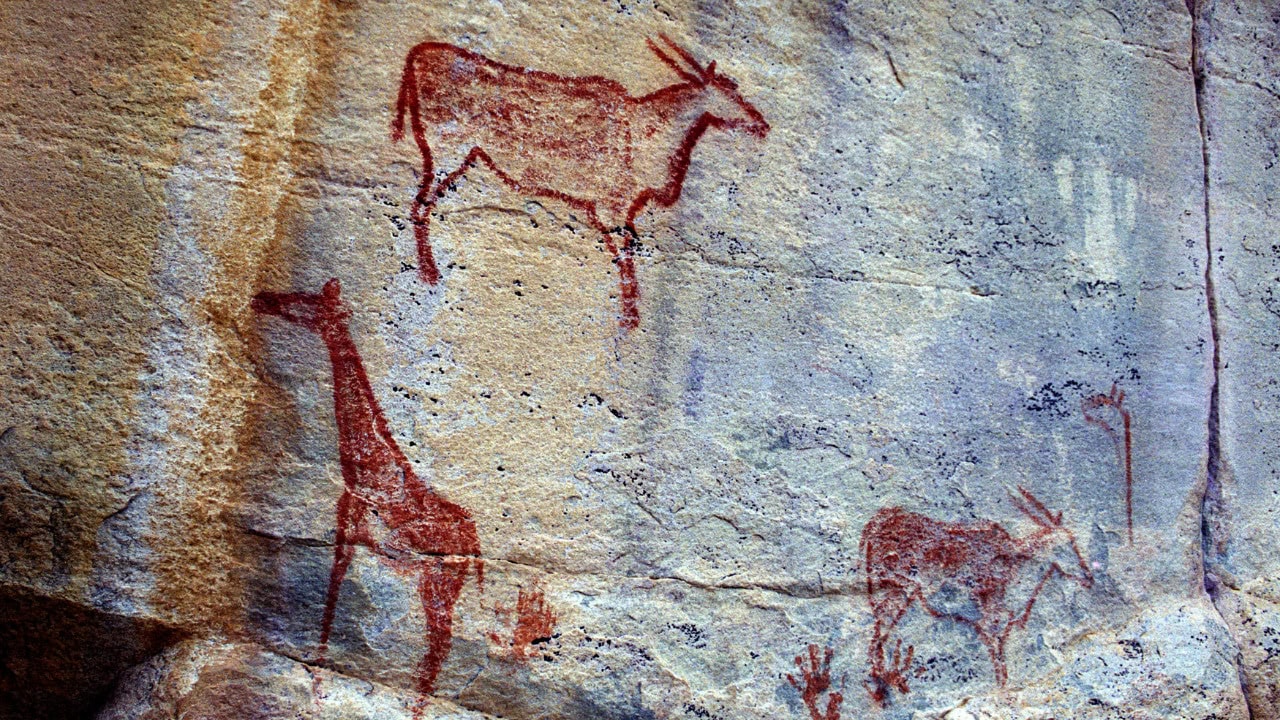A place of deep spiritual and historical significance, Tsodilo Hills rises dramatically from the Kalahari Desert, creating a striking contrast to the surrounding arid landscape. This UNESCO World Heritage Site is often referred to as the “Louvre of the Desert” as a result of its remarkable collection of ancient rock art. With over 4,500 rock paintings spread across its towering quartzite formations, Tsodilo Hills offers visitors a fascinating glimpse into the spiritual and cultural heritage of the San people, who have lived in the region for tens of thousands of years.
Must-Visit Areas in Tsodilo Hills
Gain insight into Botswana’s awe-inspiring past by exploring spiritual sites long frequented by the indigenous San people:
The Four Hills: Sacred Sites of the San

Tsodilo Hills consists of four prominent rock formations: Male, Female, Child, and the smallest, the Grandchild. According to San mythology, these hills represent a spiritual family, with the Male hill being the highest and considered the most sacred. The San believe that their ancestors’ spirits reside here, and traditional ceremonies are still performed in the area. Exploring these hills offers an opportunity to connect with the ancient beliefs and traditions of Botswana’s indigenous people.
Rock Art Galleries: Stories in Stone

The rock paintings of Tsodilo Hills are among the best-preserved in Africa, with some dating back more than 20,000 years. These artworks depict a variety of subjects, including human figures, animals such as giraffes and rhinos, and intricate geometric patterns. The Rhino Cave and the White Paintings Rock Shelter are two of the most famous sites, showcasing some of the most detailed and complex imagery. Guided walks led by local experts provide deeper insight into the meaning and history behind these incredible artworks.
When’s the Best Time to Visit Tsodilo Hills?
The best time to visit Tsodilo Hills is during the cooler months, from May to September, when temperatures are more comfortable for hiking and exploring. The summer months, from October to April, can be extremely hot, making outdoor activities more challenging. The dry season also makes for easier access, as roads can become difficult to navigate after heavy rains.
Wildlife and Birdlife at Tsodilo Hills
Although primarily known for its cultural significance, Tsodilo Hills is also home to a variety of wildlife. Kudu, steenbok, and other small antelope can be seen in the area, while leopards and hyenas occasionally roam the hills. Birdwatchers will find plenty to admire, with species such as the rock kestrel, Verreaux’s eagle, and the Hartlaub’s spurfowl frequently spotted.
How to Get to Tsodilo Hills
Tsodilo Hills is located in northwestern Botswana, near the Namibian border, and is best accessed from Maun or Shakawe. The site can also be reached by charter flights to a nearby airstrip, followed by a short drive to the hills. Once there, visitors can explore the area on foot with the help of experienced guides from the local community.